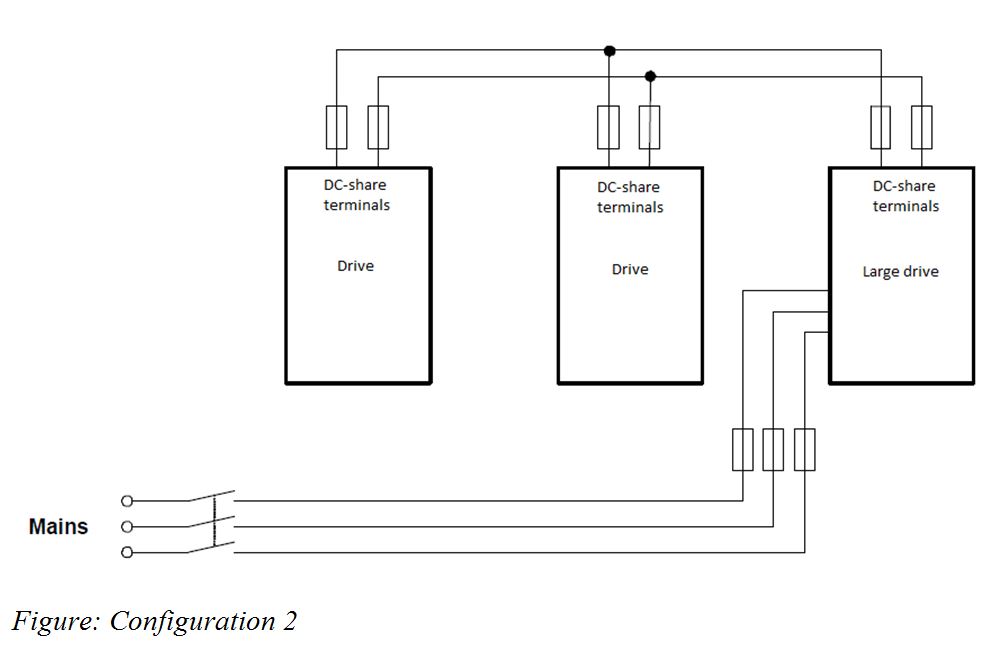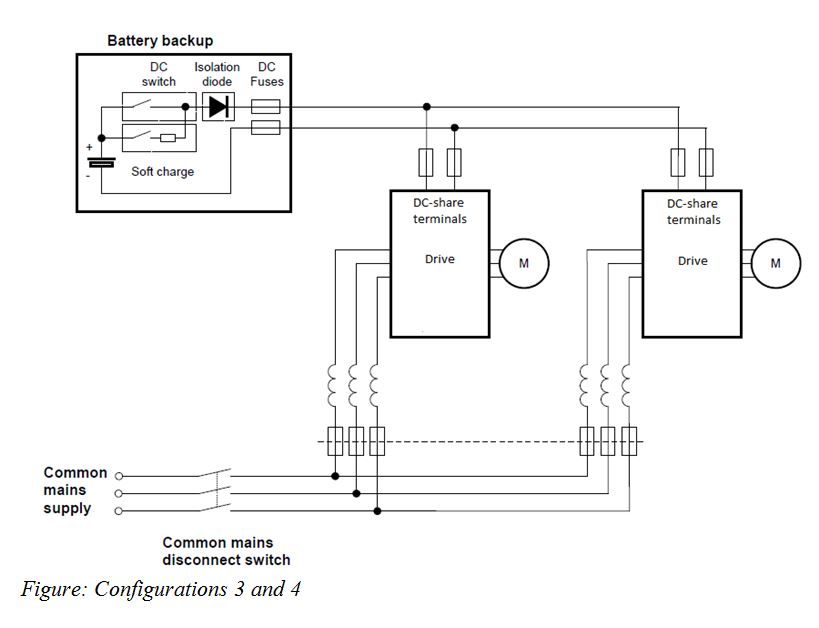Load sharing is a concept normally used for referring to a group of motors operating a common load. This approach can be found in long conveyors, extruders, winches and other applications. The whole group of motors can be operated by a single drive or, better, each motor is operated by its own drive, which provides continuous operation if one motor or drive fails.
A slightly different concept is the connection of a group of drives over the same DC-link. Each drive controls a different motor and the motors don’t necessarily operate the same load, but normally different ones. This approach is quite beneficial when the different loads would be exposed to continuous acceleration/operation/deceleration cycles in a non-simultaneous way (some accelerating when others decelerating, for example). This operation is normally referred as DC sharing.
Benefits of DC-sharing
DC-sharing provides the following benefits:
- Energy savings – motors running in regenerative mode can supply power to other motors that are running in motoring mode, through the common DC-link of their respective frequency converters.
- Reduced costs and spare parts – in most cases, only one brake resistor is required for the installation instead of a brake resistor for each frequency converter.
- Power back-up – in case of mains failure, all frequency converters can be supplied through the DC-link from a backup. The application can thus continue running or go through a controlled shutdown process.
Configurations
The following configurations can be considered for DC-sharing applications:
- DC supply with inrush limitation. Load-sharing terminals in the drives must be equipped with fuses to protect the DC bus against short-circuits and the frequency converters from overload.

- One large mains-supplied drive supplies other smaller drives. The power-up time of the application is increased as the small drives supplied from load share terminals are slowly charged through the large drive.

- All frequency converters are supplied individually from mains. AC line reactors are required in series with the mains fuses. They ensure that the load is shared proportionally to the nominal power of each frequency converter and prevent damage to any rectifier.

- Using a battery back-up: all drives can be supplied from a battery back-up in case of mains failure. The application can thus continue running or go through a controlled shutdown.
Braking
When a motor is decelerated or stopped, there is a flux of energy back to the drive, which increases the DC link voltage (energy passes through the free-wheeling diodes of the inverter bridge but cannot pass through the diodes of the rectifier).
If the regenerative power of decelerated motors is bigger than the motoring power required for the rest of motors, the excess of power needs to be dissipated through brake resistors or transferred back to mains through a regenerative unit connected to the common DC-link.
It is normally not necessary to equip all drives with resistor brakes but a brake chopper is necessary to control DC bus voltage by draining current to the brake resistor. The brake chopper is automatically activated when the DC bus voltage exceeds a specified level and maintains DC bus voltage at that level by modifying the conduction and non-conduction times of the drainage current to the brake resistor.
To be considered
- Drives must be equipped with load-sharing terminals: some models have them by default, others need to be ordered as an optional, but there are drives in the market with no DC-sharing capabilities.
- All the drives should be of the same product series and voltage rating.
- Place drives close to each other to allow the wiring between them to be as short as possible (max. 25 m). The wiring must be built symmetrically around the drive(s) with the highest power. In addition, the two wires must be run closely together, and if possible twisted.
- Different frame sizes could use different methods for inrush current limitation in the DC-link capacitors. Therefore options for combining different frame sizes in load sharing applications are limited. Consult your drive supplier about this point when considering a DC-share application.
